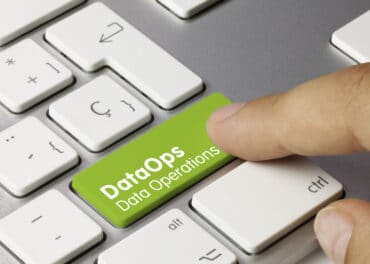
Enabling real-time data democratization is no easy task philosophically, organizationally, or technologically.
At the beginning of data democratization, the biggest barrier was philosophical and bureaucratic. Organizations of all sizes operated under the now-obsolete concept that certain people in specific departments had the access required to integrate data sources, manage the data infrastructure, and run analytics software.
Once organizations broke themselves free from that perception and started letting other business users run analytics on their data regardless of their technical know-how, they began to unlock performance and efficiency benefits they would have never thought possible. And plenty of tools, like low-/no-code analytics platforms, emerged to meet a growing demand to visualize data in ways more people can understand.
But this change, however positive, has also been close-sighted. For the most part, data democratization has focused on historical batch analysis on stable, stored data. Think of marketing folks trying to understand which version of their promotional materials transformed into the highest average lifetime value for the company. Or for customer service teams to understand, holistically, how a new effort to document their APIs reduced the volume of help desk calls, made customers more proactive and profitable, and ultimately improved the company’s bottom line.
The next frontier is the democratization of real-time data—the idea that everyone within an organization should have the access and tooling required to analyze and make sense of what’s happening right now to make faster, more proactive decisions around their KPIs and overall objectives.
See also: Can Democratization Save Businesses Drowning in IIoT Data?
Here are some technological trends supporting this drive toward real-time data democratization.
Automated integration tools: These tools unburden technical staff from being the gatekeepers—or enablers—of the business users masses who want to connect platforms X, Y, and Z together. Instead of manually connecting APIs or mapping fields through new code, automated integration tools use tools like AI to develop templates that teams can then leverage to quickly un-silo their data.
Active metadata: Metadata is context for information—things like its creation date, source, organizational labels/tags, and more. In the past, metadata was a static resource and generally not considered nearly as valuable as the data itself.
But with active metadata, there’s a massive opportunity to apply machine learning (ML) or other automated processing techniques against large real-time datasets to ensure data is interpreted properly. New metadata techniques also help collect and clean data, helping business users focus on what’s truly important.
Synthetic data: For organizations that want to fine-tune their ML training or analytics algorithms but don’t have enough (or the correct) data to work from, synthetic data could be a massive opportunity. Synthetic data is the practice of generating new artificial datasets, based on a real-world “seed,” to diversity and expand the opportunities for testing theories and rooting out harmful biases.
Data service and delivery layers: We’ve all heard of data warehouses and data lakes, but the data lakehouse, which is a new data management layer built from open-source technology. The lakehouse lets organizations store all the structured and unstructured data, but with the powerful combination of low-cost storage from data lakes and ACID-compliant transactions from warehouses. Early adopters, like Disney, Twitter, and Walmart, are finding massive benefits in reliable data storage and rapid querying.
Data fabrics: When building a modern data storage and analytics layer, many organizations find themselves in an inverse situation—their data is un-siloed, but they have too many technological tools to make sense of. Data catalogs, knowledge graphs, preparation layers, recommendation engines, and so on.
The data fabric is a unified data delivery platform that hides all the complexity and exposes data in business-friendly formats no matter where it’s coming from. Add in some semantics and governance rules, and you have a powerful way to expose data with all the right guideposts.
Wide, not big, data: Every organization is relentlessly focused on hoovering up more and more real-time data, but that can come at the expense of variety. Wide data is the idea that organizations should leverage integration, sources, and analytics tools that don’t distinguish between internal, external, structured, and unstructured data.
Why variety? Most AI-based applications simply can’t run without it, which is exactly why synthetic data is just above at #3. The more variety an organization has within its real-time dataset, the more likely it’ll find interesting new correlations or be able to validate the quality of what they’re already collecting.
Knowledge graphs: Most real-time structured data is in tabular format—columns and rows, like you’ll find in any relational-based database. That’s useful if you have tons of SQL experts on-hand to write new queries, but it’s also antithetical to real-time data democratization.
Knowledge graphs leverage a graph database, which stores data nodes and edges (aka relationships between nodes), to build a “map” of an organization’s knowledge using a flexible schema and support for both structured and unstructured data. Anyone can now follow this map, with easily-understood contextual details and easier querying, to build new visualizations or more efficiently create insights from incoming data.
Enabling real-time data democratization is no easy task—philosophically, organizationally, or technologically. In an era when 75% of business executives don’t trust their data but are eager to drive more value from the existing cost of storing said data, we’ll likely continue to see technological change in the driver’s seat. Once they have the right tools, whether a lakehouse, fabric, or agnostic integration, they’ll figure out a way to make their people follow suit.





























